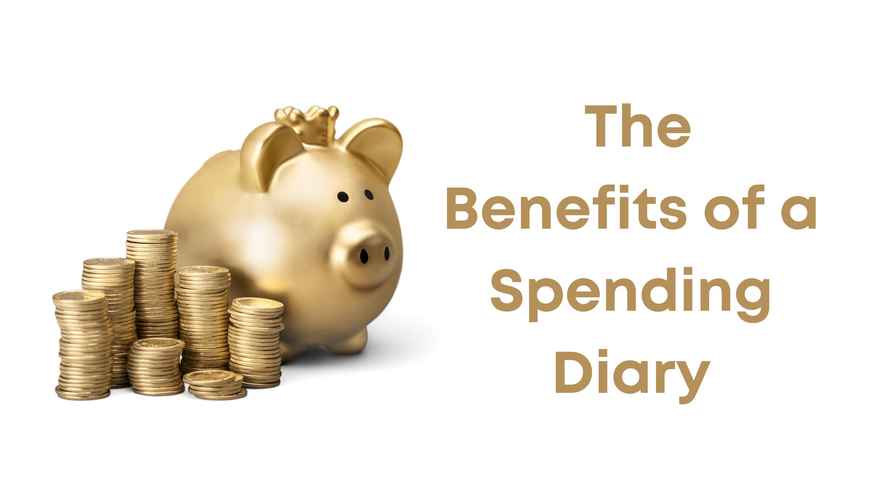Unlocking Financial Clarity: The Unmatched Benefits of a Spending Diary

The Power of a Spending Diary
Navigating the waters of personal finance often reveals unexpected currents and undercurrents, especially when it comes to spending. This area of our lives can evoke emotions, from anxiety at the thought of confronting our habits to surprise at discovering where our money actually goes.
This is where the transformative power of a spending diary comes into play.
Why Keep a Spending Diary?
A spending diary is more than just a record of transactions; it's a mirror reflecting our financial habits, revealing the truth about our spending. It's particularly enlightening for those who diligently monitor their bank accounts yet still feel disconnected from where their money flows.
Setting Up Your Spending Diary
Getting started is straightforward: download a pre-made spending diary template or create your own in a notebook. The key is choosing a format you'll consistently use, whether a digital tool, a spreadsheet, or the simplicity of pen and paper. For the tech-savvy, apps like Yolt in the UK integrate with your online banking, offering a seamless way to track spending. However, the commitment to use it daily is more crucial than the medium.
The Comprehensive Approach: Unveiling Your Financial Landscape
Embarking on a comprehensive review of your finances through a spending diary involves more than just tracking daily expenses. It's about painting a full picture of where your money has been going over a significant period. This approach helps identify your spending habits and areas where you can potentially save. Here’s how to make this review both thorough and insightful:
Gather Your Data
Start by collecting all financial statements from the past three months, including bank accounts, credit cards, online payment systems, and cash receipts. This historical data is crucial for establishing a baseline of your spending habits.
Categorize Your Spending
Divide your expenses into broad categories that make sense for your lifestyle. Typical categories might include:
- Housing: Rent or mortgage, utilities, insurance, property taxes, maintenance.
- Food: Groceries, dining out, takeaways.
- Transportation: Public transit, fuel, parking fees, maintenance, insurance.
- Leisure: Subscriptions (streaming, magazines), hobbies, sports, and outings.
- Savings & Investments: Regular savings contributions, investment accounts, and retirement funds.
- Debt Repayment: Credit card payments, loans, and other debts.
- Essentials: Healthcare, education, childcare.
- Miscellaneous: Clothing, gifts, personal care, home goods.
By categorizing your expenses, you can quickly identify where most of your money is going and spot areas for potential savings.
Analyze Patterns and Trends
Look for patterns in your spending. Are there months where you tend to spend more? What are the biggest drains on your finances? This step is not about judging your choices but understanding them.
Highlight Areas for Improvement
As you categorize and review your spending, certain areas might stand out as opportunities for improvement. Maybe you’re spending a lot on dining out or subscriptions you barely use. Recognizing these patterns is the first step toward making conscious changes.
Use Tools to Simplify
While manual tracking has its benefits, don’t shy away from using tools and apps that can automate some of this process. Many apps categorize transactions automatically, saving you time and providing insights with minimal effort.
Setting Up for Future Reviews
Once you’ve completed your three-month review, consider how to make this process easier for future checks. Maybe it’s setting up more specific categories in your banking app or consolidating debts to simplify payments. Use this initial comprehensive review to streamline your financial tracking going forward.
Bringing It All Together
This comprehensive approach to reviewing your spending through a diary is about gaining insights into your financial habits and identifying opportunities to align your spending with your values and goals. It’s a powerful exercise in financial awareness that lays the groundwork for making meaningful changes to your spending habits and, ultimately, achieving your financial objectives.
Reflective Questions
After compiling data for a period of time, reflecting on your spending habits is crucial. Ask yourself:
- Which expenses were essential?
- How did my emotions affect my spending choices?
- Are there areas where I can cut back without significantly impacting my quality of life?
This reflection can lead to a more mindful approach to spending, where each dollar spent aligns more closely with your values and financial goals.
The Benefits of a Spending Diary
The act of maintaining a spending diary brings numerous benefits:
- Increased Awareness: It highlights where your money goes, revealing patterns you might not have noticed.
- Emotional Insight: By identifying emotional triggers, you can address the root causes of impulsive or unnecessary spending.
- Behavioural Change: Recording expenditures can naturally lead to more thoughtful spending decisions as you become more conscious of each purchase's value and necessity.
A spending diary is not just a tool for financial management; it's a catalyst for financial transformation. It fosters a deeper connection with your spending habits, empowering you to make informed decisions that align with your financial aspirations. By committing to this practice, you're taking a significant step towards mastering your finances and paving the way for a more secure and fulfilling financial future.
In the personal finance journey, awareness is the first step to change. Let a spending diary be your guide to uncovering and reshaping the financial habits that shape your life.
0 comments
Leave a comment
Please log in or register to post a comment